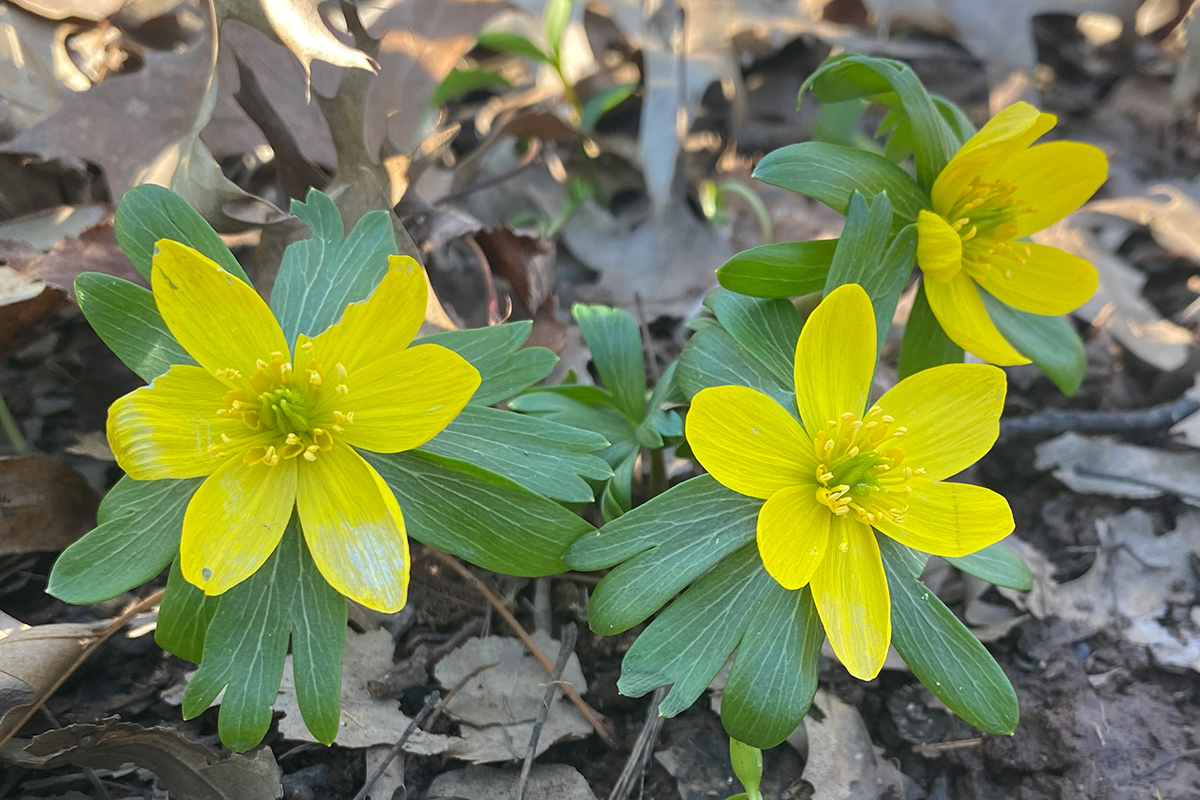
Planting spring-flowering bulbs in fall is an easy way to bring joy to the garden in the following year. This group of plants brings with them tremendous excitement and early color. Regional knowledge when selecting individual cultivars for your garden is particularly important with this category of plants. Unfortunately, plants that may not be the best choice for the Southeast are often distributed and sold in our region anyway. The Southeast has its own unique growing conditions, and bulbs don’t always respond the same here as in other parts of the country. Most of us are looking for plants we know will thrive. This doesn’t mean you shouldn’t give a chance to unproven plants. Experimentation should be encouraged and can be fun on a small scale. However, the following bulbs have proven that they can grow well here. These are unique, lesser-known bulbs and bulb-like plants (geophytes) that bloom at different times of spring. Plant them all for a succession of flowers from February through June.

Winter aconite
Eranthis hyemalis, Zones 4–7
Bloom time: Late winter to early spring
Winter aconite is a small fall-planted tuber that ranks with the earliest of bloomers in the Southeast. Depending on your exact location, February bloom is not out of the ordinary. This plant is more popular with northern gardeners; however, when planted in a shaded woodland garden, it can thrive in the Southeast. The frilly foliage is equally as attractive as the buttercup-yellow flowers. I recommend using it as a space filler in the shade, where leafy herbaceous plants like hostas (Hosta spp. and cvs., Zones 3–8) can fill in later in the season.

‘Cassata’ daffodil
Narcissus ‘Cassata’, Zones 3–9
Bloom time: Midspring
One of my favorite daffodils for the Southeast is ‘Cassata’. This is an early-season daffodil that opens with a splayed yellow cup on top of white outer petals. It has an extended season of beauty as the yellow petals mature to almost pure white. ‘Cassata’ also perennializes well in southeastern gardens and is very long-lived. Overall, daffodils are extremely tough plants. One caution is to not overirrigate beds with daffodils during dormant periods. This can lead to rotted bulbs and reduce survivability.

‘Flava’ tulip
Tulipa orphanidea ‘Flava’, Zones 5–8
Bloom time: Mid to late spring
I typically recommend species tulips rather than hybrid tulips for the Southeast because they are more likely to come back year after year. ‘Flava’ tulip, sometimes also called golden Anatolian tulip, is a solid choice for those looking for a longer-lasting plant. Yellow blooms with shades of green and blushes of orange make a loose bouquet in the midspring garden. Amending soil to improve drainage will increase survivability in our region.

Tumbleweed onion
Allium schubertii, Zones 4–8
Bloom time: Late spring to early summer
Alliums, or ornamental onions, continue to grow in popularity. Of all the early-blooming alliums, there are three that stick out as stars in the southeastern garden. Those are Star of Persia (Allium christophii, Zones 4–8), black garlic (Allium nigrum, Zones 4–8), and tumbleweed onion. Tumbleweed onion is my absolute favorite. This bulb is drastically different from the purple tennis balls on a stick you might picture when you think of alliums. Blooms the size of cantaloupes erupt like spidery fireworks from a central point. Regardless of the allium you choose, they all bring dramatic architecture to the garden. The three mentioned here are late spring bloomers. Most alliums like full sun in well-drained soil and are wonderful pollinator attractors.
When I put a bulb in the ground in the fall, I plant it with the idea of what is to come next year. And when I see the bulbs I planted the previous year come to life in the spring, I often find myself excited it worked. Planting bulbs that are right for your climate helps increase the chance of a spectacular spring show. For more on growing bulbs in the Southeast, check out:
—Andy Pulte is a faculty member in the plant sciences department at the University of Tennessee.
All photos, unless otherwise noted: Andy Pulte


















Comments
Log in or create an account to post a comment.
Sign up Log in